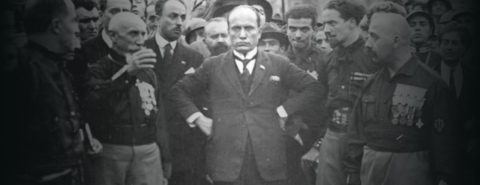 The Soviet invasion of Afghanistan: the past’s resemblance to the present On a cold, sunny afternoon, a host of delegates entered the General Assembly of the United Nations in Manhattan. When everyone had found their seats and settled in, the assembly’s president called the room to order. After holding a minute of silence for prayer and meditation, he quickly ran through a handful of administrative issues before turning to the matter that had brought the assembly together that day. This was an emergency session. At its heart were questions about state sovereignty, political self-determination, and the nature of international relations. The United States’ representative declared: “Today we are faced with a challenge to the principles of the [UN] Charter as grave as any that necessitated our meeting during previous crises.” Another state representative told the gathered crowd: While most of us, for decades, had our very physical, cultural and social existence flouted, some of the founders of the United Nations have never known foreign subjugation, the denial of their very being or the situation of the dominated with no other right than that of submission … The issue before us today, in its brutality, seems to us to be shaking the foundations of our present-day civilization.
In the final vote, the General Assembly overwhelmingly passed a resolution condemning foreign invasion and calling for “the immediate, unconditional and total withdrawal of foreign troops.” Current observers would be forgiven for thinking this exchange refers to the meeting of the UNGA that took place on 2 March 2022, in which an emergency session debated the Russian invasion of Ukraine and passed a resolution condemning Russian military action. In fact, this exchange took place more than 40 years ago, at the UN’s sixth emergency session, 10-12 January 1980, which focused on the Soviet invasion of Afghanistan. The Soviet invasion of Afghanistan, December 1979Soviet troops had entered Afghanistan in late December 1979 to shore up the struggling Marxist regime, headed by the People’s Democratic Party of Afghanistan. Soviet troops, the Politburo insisted, were upholding a Soviet-Afghan treaty of friendship in the face of concerted attacks by Afghan resistance fighters and their Pakistani, Chinese, and US allies. However, as critics were quick to point out, the Soviets put in place a new ruler, Babrak Karmal, who had been exiled from the previous government and had been nowhere near Kabul in the run up to the intervention. “Many of the issues discussed in 2022 resembled those in 1980: sovereignty, self-determination… foreign intervention, the nature of nationhood, and the power of nationalism.”
Many of the issues discussed in 2022 resembled those in 1980: sovereignty, self-determination, international legal debates about foreign intervention, and the nature of nationhood and the power of nationalism. However, the response to events in Afghanistan was more unified. China and the United States notably were in full agreement in decrying Soviet army movements (and in providing covert aid to the regime’s opponents). States across the Global South likewise were highly critical. For them, the Soviet invasion, coming as it did in the declining years of European decolonization, represented a dangerous precedent. In effect, it appeared as the re-colonization of a non-Western state that had struggled to and succeeded in gaining its independence. Consequently, states of the Global South showed a largely united front in criticizing Soviet activities. Over the course of the 1980s, the collective anger of the General Assembly resulted in a series of motions demanding a Soviet withdrawal and the return of Afghan sovereignty. It also forced the UN to take a key mediating role. Over the next nine years, UN diplomats worked with their counterparts in Moscow, Washington, Islamabad, and Kabul to negotiate a Soviet withdrawal from Afghanistan. That withdrawal would not be complete until February 1989, and even then, fighting in Afghanistan would not stop for another forty years. Notably the UN-led negotiations did not invite the perspectives of Afghan resistance groups. In turn, talks offered little scope for a concrete political settlement, given that Afghanistan was the site of a civil war between Afghans, not just a foreign intervention. The Soviet invasion of Afghanistan: a global conflictThe Soviet invasion of Afghanistan was part of a fundamentally global conflict. In part, this was due to the Cold War context in which it took place. Soviet decision-making necessitated a response from the United States. So, while the Soviets supported the Afghan Marxists, the Carter and Reagan administrations chose to aid its opponents, the Afghan resistance groups who fought to overthrow the socialist regime. However, Cold War conflict reveals only one aspect of the civil war’s inherent internationalism. The UN’s diplomatic intervention reveals another, in which international organizations played a key role. Examining the motivations and activities of different Afghan interest groups reveals a host of other global connections, both ideological and practical. “The Soviet invasion of Afghanistan was part of a fundamentally global conflict.”
The Afghan civil war of the 1980s was the culmination of a much longer conflict over the nature of politics in Afghanistan (and across the decolonizing world more broadly). Afghans sought to fundamentally reshape Afghan political, social, and economic dynamics, not only looking to local circumstances but couching their ideas in far more universalist terms and drawing in ideas circulating across the decolonizing world. Afghan Marxists thus linked their political and economic endeavours to those undertaken in Vietnam and Ethiopia or Cuba. Afghan Islamists, meanwhile, were tied into transnational Islamic networks and created their own offices across Europe and North American to lobby for political and financial support. By exploring some of the nodes across the world in which decisions made and networks created shaped the subsequent civil war in Afghanistan, what becomes clear is that the Soviet invasion of Afghanistan cannot be understood purely through the perspective of state actors, great power decision-making activities, or in the realms of interstate relations. It was a complex war that involved a wide range of interest groups, each of which had different aims: winning the Cold War, returning to earlier status quo in international relations, reshaping the relationship between religion and politics in state and international politics, reconfiguring Afghan nationhood and the broader relationship between nation and state. It was simply impossible for all these different motivations to be reconciled—by the UN’s negotiators or in bi- or multilateral relations. Select from numbers 1 to 13 on our interactive map to explore these nodes across the world: Click here to view the accessible version of this interactive contentOUPblog - Academic insights for the thinking world. 
 Big, wonderful, difficult questions (and answers) about life in Proust [interactive] Marcel Proust—perhaps France’s most famous literary writer—died 100 years ago. The politics of his time—the criminalization of homosexuality, the Dreyfus Affair, the lead up to World War I—shaped his life and his work. So, it’s reasonable to ask, what does Proust have to say about our lives in 2022? Proust’s 3,000-page magnum opus In Search of Lost Time continues to speak through time, largely not for the answers it provides but for the questions it asks. Proust’s novel is in part about memory, love, virtue, vice, prejudice, and folly—but the core of the book is a set of big, wonderful, difficult questions about life. Thinking about these questions today won’t help us stop climate change or rising authoritarianism—but it will help us lead a richer inner life while we do so. And the experience of reading this amazing novel—the months or years we put into reading 3,000 pages, as difficult as delightful—does important things for us too. It shows us one shape a story of a life can take. It helps us understand ourselves, nudging us to ask ourselves questions we’d never even thought about before. Begin that journey today with this exploration of the philosophical questions Proust asks us. Featured image: photo by Adam Bartoszewicz on Unsplash, public domain OUPblog - Academic insights for the thinking world. 
 The March on Rome: commemoration or celebration? Despite subsequent legend, in military terms the March on Rome was a shambles. In the pouring rain, poorly armed and badly organized, the fascist blackshirts cut a sorry figure as they trooped, unopposed, through the streets of the Italian capital. But politically the March was a bomb-shell, the explosion of which resonated not only in Italy but throughout Europe. Certainly, in other countries armed and violent militias had sprouted in the confusion of post-First World War Europe, but none had succeeded in gaining power so dramatically. When the king—Vittorio Emanuele III—decided not to invoke the intervention of the army, he effectively capitulated to the mob and thereby ensured Mussolini’s success (and, 24 years later, the end of the monarchy in Italy). Some historians have tended to downplay the importance of the March on Rome—”little more than choreography” according to some, and, of course, the absence of open battles gives weight to this point of view. However, the March should be seen in its full context. It was the crucial ratification of the fact that much of Italy had been out of the control of the authorities of the liberal state for many months. In many provinces of northern and central Italy, the fascists already exercised almost complete de facto control. As Italo Balbo, the leader of the fascists of Ferrara, boasted in early 1922, “The prefect does what I tell him.” In the hours preceding the March this position of strength was made evident with blackshirts occupying prefectures, police stations, post offices, telegraph offices, and railway stations throughout much of Italy. They faced little opposition. What the March really tells us is that the government of the liberal state—that is, the political system that had governed Italy since Unification—had abdicated power to an eversive movement, not because of a military confrontation, but because the enormous stress of the war had severely weakened the capacity of the state to withstand the challenge posed by the fascists. In a society radically changed by the experience of the war, the old politics of pre-1914 found itself lacking. “The March was the crucial ratification of the fact that much of Italy had been out of the control of the authorities of the liberal state for many months.”
Not that the nature of the challenge was obvious to many. Fascists waved the national flag, sang patriotic songs, swore loyalty to the crown; many continued to wear their army uniforms. Creating disorder as they killed, maimed, and forced opponents (particularly socialist opponents) into exile, they claimed persistently to be the representatives of order. Inevitably police and regular army officers tended to be complicit with the creeping take-over of power that the fascists had affected from 1921 onwards. Who was going to shoot at ex-combattents with strings of medals pinned to their chests? Only a few, more far-sighted commentators, among them Antonio Gramsci, saw that Mussolini was moving towards dictatorship. The March on Rome would become one of the great founding “myths” of the fascist movement, with a glorification which went far beyond its rather ramshackle reality. It was presented by fascist propaganda as the moment of the fascist “revolution,” the watershed between the old and the new politics, between the drab past of “little Italy” and the dazzling future of what was going to be a new great power on the European scene. Throughout the twenty years of the regime the March remained central to fascist mythology; it was the event that most expressed the fascist spirit, the event that sustained the legend of the heroic blackshirts saving Italy from the Bolshevik hordes. Its success constituted the legitimation of fascist violence. As a watershed between eras it was also used to distinguish between fascists; there were those who had belonged to the movement before the March, who merited particular respect and enjoyed appreciable privileges, and those who were post-March. Such was the prestige of the pre-Marchers that, by the mid-1930s, there was a lively market in false party cards dated to the months before October 1922. Throughout Europe reaction to the March was, inevitably, mixed, with some appalled by the violence and the total disregard the fascists showed for parliamentary politics, while others—such as those among British conservative opinion—thought that the fascist government would bring much-needed “order” to what they condescendingly saw as typically Mediterranean chaos. Many right-wing European politicians looked on Mussolini and to his mode of achieving power with admiration. One man in particular was greatly impressed by the March on Rome and even hoped to emulate it. This was Adolf Hitler. “The March on Rome would become one of the great founding “myths” of the fascist movement, with a glorification which went far beyond its rather ramshackle reality.”
Where are we now—a hundred years on? Certainly the bookshops are full of new books on the fascist seizure of power; interest (at least among publishers) is not lacking. But, at a broader level, within Italy, reactions seem muted. There is little sense that the March represented the begining of the tragedy that cost Italy more than half a million dead. It has become a historical event that remains, somehow, with few reverberations. This lack of reaction mirrors a wider phenomenon, which is the increasingly indulgent attitude evident in Italy towards the fascist regime and, in particular, towards its leader. It is apparent in such phrases as “Mussolini did many good things,” “Mussolini was not like Hitler,” or “Mussolini made one mistake” (referring to the alliance with Hitler). There has been, as one Italian historian has put it, a “defascistization of fascism” in popular memory—a tendency that draws sustenance from the way in which the regime continues to be seen by many through the lens created by the propaganda of the regime itself. Drained marshlands, trains on time, and (heavily organized) mass rallies trump violence, corruption, and war every time. And Mussolini seems to be regaining some of his undoubted charisma. The picture of fascism currently present in many quarters is often comforting, even nostalgic, rather than alarming. It evokes the virtues of the “strong man” and the “firm hand”—the apparent virtues of authoritarian government. Small wonder that, in the confusions and uncertainties of the contemporary world, these “virtues” are increasingly appealing. OUPblog - Academic insights for the thinking world. 
 24 hours in revolutionary Paris: 9 Thermidor [timeline] The day of 9 Thermidor in the French Republican calendar (27 July 1794) is universally acknowledged as a major turning-point in the history of the French Revolution. At midnight, Maximilien Robespierre, the most prominent member of the Committee of Public Safety, which had for more than a year directed the Reign of Terror, was planning to destroy one of the most dangerous plots that the Revolution had faced. By midnight at the close of the day, following a day of uncertainty, surprises, upsets, and reverses, Robespierre’s world had been turned upside down. He was an outlaw, on the run, and himself wanted for conspiracy against the Republic. He felt that his whole life and his Revolutionary career were drawing to an end. As indeed they were. He shot himself shortly afterwards. Half-dead, the guillotine finished him off in grisly fashion the next day. The Fall of Robespierre by Colin Jones provides an hour-by-hour analysis of these 24 hours. Explore each of those hours across the 24 hours of 9 Thermidor by following the white circles, then black circles, and finally the blue circle in the interactive timeline below. OUPblog - Academic insights for the thinking world. 
 The Brexit referendum, five years on: can future generations “rebuild Europe”? Five years ago today, the British government “triggered” (an apt term in the circumstances) Article 50 of the Treaty of Lisbon which permitted any member state to secede from the European Union “in accordance with its own constitutional requirements.” Five years of bitter, muddled wrangling later, Britain has finally departed from the Union, the first—and most in Europe hope the only—state to do so. Britain had, of course, never really ever been a part of Europe—not at least of the Europe which ever since 1951 has been edging itself steadily, if often in Jean Monnet’s words “by stealth,” towards a species of con-federal state, a “United States of Europe.” “We are with Europe,” as Winston Churchill said firmly in 1930, “but not of it. We are linked but not compromised. We are interested and associated but not absorbed.” And so, it has been ever since. The economic impact of Brexit, although severe, has not been so dire as most “remainers” had predicted, and perhaps hoped. Britain seems to be prepared to co-operate with its European neighbours—what choice does it have?—even while it struggles, as the crisis in Ukraine continues to show all too clearly, to re-assert itself as an independent regional power, if no longer a global one. But it has certainly brought no obvious benefits, nor is it likely to, in particular for the younger generations who were given no say in matter. “If the EU is finally to become ‘the model for new world order,’ it still needs to do more.”
The future for Europe, by contrast, seems in many respects far brighter than it was in 2016. The impact of Brexit has tamed many of the xenophobic populist parties within Europe. Even the most extreme of the candidates in the upcoming French presidential election, Eric Zemmour, who speaks loudly of closing France’s borders, has not yet raised the spectre of a “Frexit” (although how he could achieve one without the other he cannot explain.) And with the British no longer there to slow it down, the Union is better placed to expand its “soft power.” The so-called “Green Deal” endorsed by the member states in December 2019, which aims to make Europe climate-neutral by 2050, will inevitably have a massive impact even on those “many international partners”—which must now include Britain—who, in the measured words of the Commission, “do not share the same ambition as the EU.” It is taking new initiatives to reform globalization and is playing an ever-increasing role in global governance by building “a European regulatory state” based upon a system of intergovernmental networks—as described by Anu Bradford, in her remarkable book, The Brussels Effect: How the European Union Rules the World. It is steadily, if all too slowly in the face of the growing power of China and Russia and of a barely controlled mass immigration, building a new, more humane, more varied, more flexible, more far-seeing political community. “If Europe is to fulfill the promises implicit in the phrase ‘ever-greater union,’ it will need to develop a far more powerful sense of its own political identity.”
But if it is finally to become what the American political theorist and diplomat Anne-Marie Slaughter once called “the model for [the] new world order” it still needs to do more. It will need to develop a common policy of social welfare for its citizens and a single unified pension scheme. It will need to create a network of common health policies and common medical institutions, the absence of which has been such an obstacle in battling the current pandemic. It will need, as the French economist Thomas Piketty’s “Manifesto for the Democratization of Europe” insists, to create a common system of taxation and a fiscal control capable of fulfilling the promise of the Treaty of Rome of 1957, to bring about an “equalization in the progress of conditions of life and work.” Most pressing of all, if Europe is to fulfill the promises implicit in the phrase “ever-greater union,” it will need to develop a far more powerful sense of its own political identity. European citizenship—of which all the peoples of Britain were stripped in January—has none of the emotive and cohesive power that citizenship of any nation-state is intended to offer. It must be made to count. And to do that, it should, as the European Court has so often insisted, in the last instance, trump the demands imposed by the member states. It should, in short, be a true transnational citizenship. It needs, as the ill-fated Constitution of 2004 claimed to offer, a union which “places the individual at the heart of its activities, by establishing the citizenship of the Union and by creating an area of freedom, security and justice.” This might then give some real substance to the slogan: “ever-closer union.” “It can only be hoped that wiser generations might be able to ‘rebuild Europe,’ just as their ancestors had hoped to do after 1815, 1918, and 1945.”
It can only be hoped that, in this way, wiser, more experienced generations in some not too remote future might be able to “rebuild Europe,” just as their ancestors had hoped to do after 1815, 1918, and 1945. This might well then bring Europe far closer to the vision of “a community of others” or a “persistent plurality of peoples,” closer to being a true European people, varying perhaps as little in their cultural assumptions and political and social aspirations between the citizens of the member states as two centuries ago they did between the villages and parishes within a single nation. And if that happens then perhaps a new more far-sighted, more cosmopolitan Britain might be prepared to re-join the Union and become, at last, not merely with Europe, but also of it. OUPblog - Academic insights for the thinking world. 
|
|